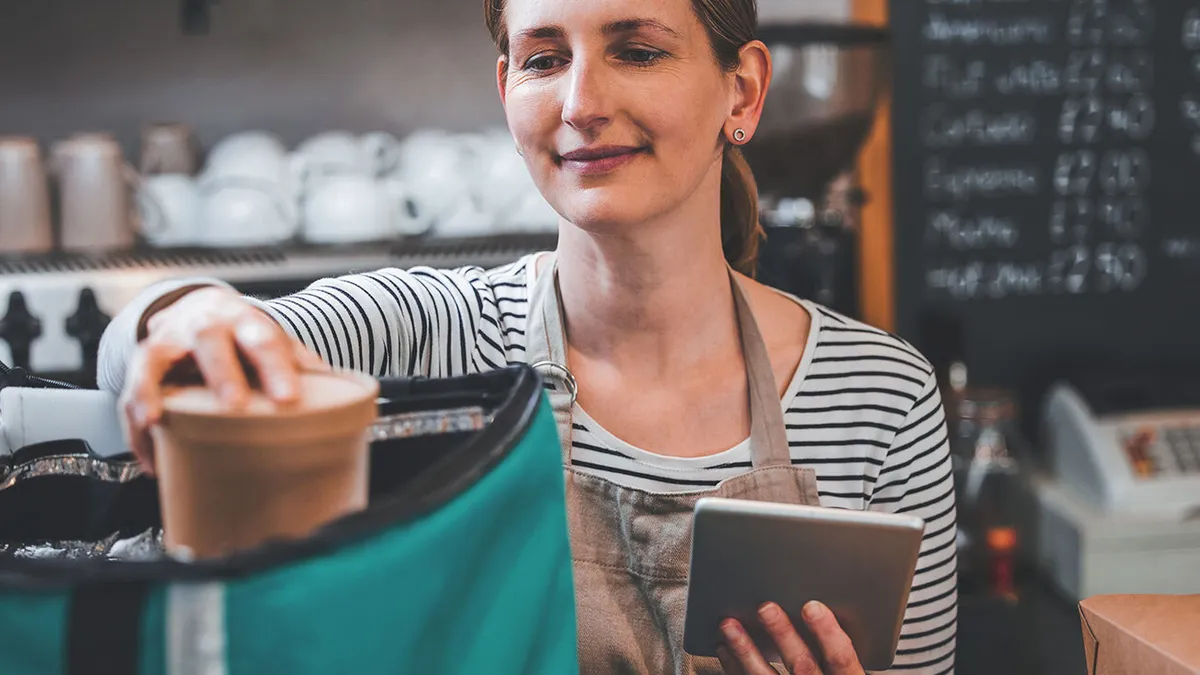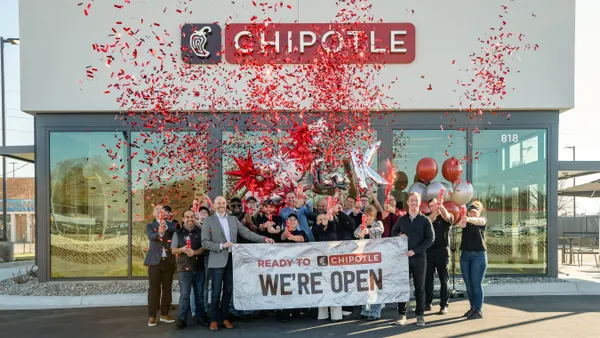Picture a busy Saturday night in your restaurant. The dining room is full, there’s a wait at the door and delivery orders are streaming in. Sound good?
Then things shift.
Your host fumbles with a tablet of third-party app orders just as tables start to turn. Your manager squints at a different tablet, trying to decipher an order from an app featuring an outdated menu. Everyone is in the weeds.
What could you have done to prevent this? You need all-in-one technology that manages and syncs all your native and external ordering channels into one smoothly operating platform.
Digital restaurant ecosystem approach
Many restaurant owners and managers, when faced with the issues above, take one of three approaches:
-
Shut down external ordering — Shutting down third-party apps buys you time to catch up in-restaurant at the cost of an important revenue stream.
-
Find a connector app — Apps that provide third-party connector services can simplify multitablet, multichannel issues. However, this is only a Band-Aid, adding another partner to solve your immediate problem with no thought to other issues that may arise.
-
Choose All-in-one technology – Advanced technology platform that integrates your external channels but also thinks larger, with additional capabilities of the entire digital ecosystem offered by one technology partner.
MENU’s all-in-one restaurant technology platform covers your most important restaurant business areas, boosting your digital storefront and streamlining your customer-facing operations:
-
Advanced e-commerce with branded ordering apps
-
External ordering channel consolidation and management
-
Customer loyalty and rewards programs
-
Customer data-based insights and analytics
-
Delivery and dispatch automation system
-
Marketing websites
-
Customer-engagement solutions
-
One consolidated management center
So why opt for the narrow solution as opposed to MENU’s “one source of truth” option? According to Marlon Koch, MENU’s co-founder and Chief Product Officer, restaurants are
“focusing on a single pain point that they’re trying to solve. But they’re missing out on the much bigger picture that you gain when using a unified platform such as MENU.”
Why external integration is crucial for restaurants
The world relies on apps. In top markets, people spend up to 4.8 hours per day on mobile apps. And when it comes to food delivery, online penetration is going up, from 6% in 2018 to a projected 13% in 2025. In other words, delivery apps aren’t going anywhere. And even beyond apps, there are other external channels to consider:
-
Google ordering — Currently available in the U.K., Germany, Australia and Brazil, this allows direct ordering on Google. Customers go from search to ordering without any confusing extra steps.
-
Ordering through chat apps and social media — Adopting the channels where customers interact daily not only boosts sales but also allows orders to be placed easily with fewer mistakes.
External channel integration is more important than ever. MENU handles this through MENU Link, which merges all external channels onto one easy-to-use dashboard. As Koch explained, “A single MENU tablet, running on Android, shows all orders … from all the different channels, internal and external.”
MENU Link also simplifies operations through features such as:
-
Automatic POS injection — MENU Link works with many of the major delivery apps and many of the major POS systems (and continues to expand). This means orders inject directly into your POS without the need for human entry, minimizing errors and freeing up your staff.
-
Single backend — Changing pricing or availability on apps can mean multiple phone calls to multiple services. With MENU Link, it takes one update. And how long before it’s reflected on the apps? While exact times will depend on the specific channel, Koch said that “on average, it takes about three minutes to show the updated menu.”
-
Ease of training — Consolidation means there’s no need to train staff on multiple apps that use multiple tablets. This allows for easier onboarding and fewer mistakes.
According to a US Foods survey, some of the top customer complaints about delivery were incorrect orders, inconsistent prices and limited menus.
MENU’s internal data shows a 99% success rate for their automatic POS injection. This takes care of customer complaints while leading to faster delivery times. For some MENU users, this has translated into 25% estimated increases in monthly revenue.
MENU platform sets you up for future success
The restaurant industry is often forced to be reactive. You adapt to your customers’ needs, changes in the marketplace and (as was shown during COVID-19) larger world issues. That adaptability proves your resiliency, but it can be exhausting. Ideally, you could be more proactive and ready to meet the future. You want to stay ahead of ever-changing digital consumer behaviour.
That’s where MENU’s real value is. While MENU Link provides external channel integration, MENU’s full platform expands the scope. This is the big picture that Koch referenced. “MENU is the only platform that offers a truly omnichannel ordering solution,” he said.
What is included in this big picture? MENU’s full platform adds value through features such as:
-
Control of customer data — Know your customers’ order history and their favorite items so you can better serve them. With other consolidation solutions, customer data stays hidden. MENU puts that data into your hands.
-
Branded apps — In that same US Foods survey, 54% of people said they had a restaurant in mind before opening an app. By offering a branded app, you allow customers to stay in your ecosystem.
-
Rewards and loyalty — According to a 2021 study, benefits matter when customers decide where to order from. With rewards and loyalty programs, you can drive customers to your app and keep them there with loyalty perks.
-
Delivery and dispatch — MENU provides last-mile delivery and dispatch solution to optimize your delivery capacity. And, with new ordering types like Foodspot, which supports delivery of multiple orders to one central location, you can expand like never before.
Your operations can be easier, more accurate and more streamlined through one point of contact. Plus, you’ll have easy scalability, adding or subtracting MENU’s multi-modular solutions based on the size of your business and your needs.
MENU works with some of the largest restaurant brands in the world and is growing fast. They understand what it takes to be nimble in the ever-changing technological landscape restaurants face. Restaurant chains can speed up its growth and minimize the complexities of its operations. Multi-modular technology gives restaurant managers exactly what they need to form a sound foundation and competitive advantage in building sustainable, profitable and differentiating business value that is easier to manage and scale.











